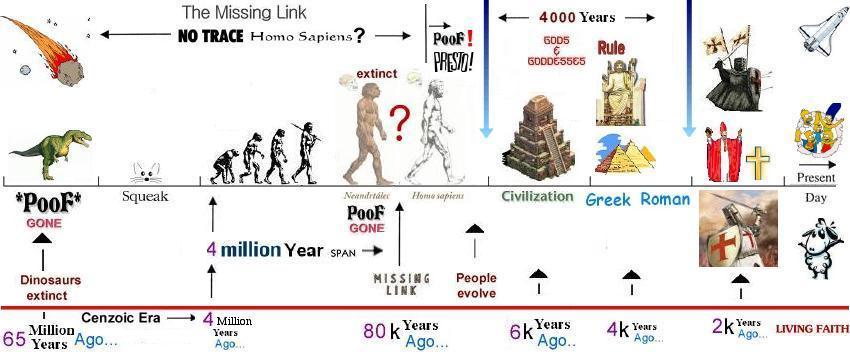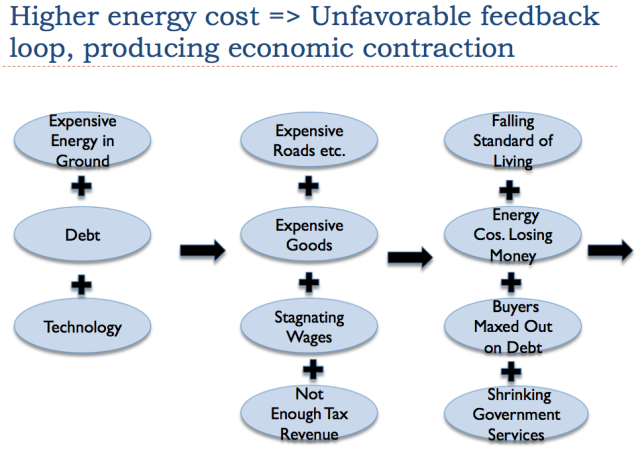**Also watch the most IMPORTANT video you'll ever see below**
*Over THREE Million Views World Wide*
|
|
"Yes Mr Smith, the Invisible Hand lead us to our final destiny" |
The Most IMPORTANT ECONOMIC Blog Ever
THE WEALTH OF PLANETS
Introduction and Purpose
Humanity’s
course is clearly in the grips of a fate that is accelerating it to a
final destiny. We are at a crossroad. Our choices at this crossroad are
defined by two paths, either to slow the pace of our journey to
extinction or to carry on as before with exponential speed. Preference
is sensibly given to the former, as it provides some time for a
possibility to put the proverbial house back in order, thereby extending
the fate of our species. Central to achieving this order of utilities
are global economic frameworks and beliefs aimed at prolonging human
activity and resource supplies.
Currency
constructs play a major role in how we go about organizing our economic
activities and conceptions. In turn their implementation affects
whether we venture towards a more sustainable path of existence or move
in rapid concert towards our final demise. Thus, this abstract briefly
examines and illustrates the nature of currency and surrogates. It
provides a possible redefinition of the conceptual process leading to
the creation of currency and management of economies. A process that is
aimed at more directly managing object concrete constructs – more
particularly, non-renewable resources.
In short, “it plants the seed” for a revised
view related to the printing of money (currency) that embeds a
concurrent goal of sustaining and allocating resources of the planet for
as long as possible… “Thus, deferring our final curtain”.
Paper Currency or Gold?
The
view that gold and similar assets will act as alternate currencies in
the immediate term is apparent and unfolding. Gold, in particular is
still a feel good visible abstract and not a concrete construct with
diverse utility. Gold has operated with this unique psychological
characteristic through-out civilized history, a perceived store of
magical invisible value. In the last analysis however, the trading of
this abstract (gold) for another abstract (paper currency) as a last
store of value is redundant unless it is also tied to usable concrete constructs with utility.
The
Wizard of Oz, parody, sheds historic light on the on-going forces
within societies that debated for decades the contrasting values of
paper currency and surrogate constructs, such as gold. An impossible
debate to conclude. There is no form of object reasoning or algebra that
may be applied to analyze “two visible abstracts” to form an absolute
utilitarian answer. Add into the mix the perception or notion of magical
powers … the social conversation then shifts from the parody of Oz to
the fairytale of Alice in Wonderland. A collective insanity of sorts.
Currency Extinction
This
redundancy issue and lack of magic that these constructs hold will
become increasing apparent as the human race runs quickly towards
resource exhaustion and a resultant extinction. Ultimately extinction is
a mathematical reality. The course of any wasting finite constructs
plotted against the infinity of time (abstract), intersects at a point
where a final state occurs. In stages before the intersection, both
currency and surrogates move to a point of becoming worthless. Simply
because these visible abstracts can no longer be exchanged for concrete
constructs with utility. There are too few left.
Easter Island and more recently the country of Nauru
have provided examples of what happens when resources are depleted.
Those who argue that these defacto extinctions occurred because these
were small and isolated geographies on the planet need a dose of quantum
perspective. Earth is a small and isolated place in the context of a
vast unimaginable universe. We would be wise to heed this quiet warning. Very wise indeed.
What are the Choices?
What
to do? What concepts of currency align best with sustaining human
survival for a longer period? Existential economics suggests that the
currency construct and creation should centre more on a balance sheet
approach as opposed to the income statement approach commonly used.
a.k.a., GDP. There are important simple distinctions between the two.
One favours the past, the other the future. One favours consumption, the
other savings.
The
income statement approach - GDP is a measure or report on the history
of what aggregate economic activity occurred over a period. When
currency is created based on a nation’s GDP it assumes an on-going
relationship between past and possible future activities. The currency
created takes no measure of a nation’s ability to continue to produce
such goods and services in the future. For instance, in the extreme case
when all of a nation’s
resources
were consumed in the past GDP period, then all of its currency has no
future value. No store of value whatsoever and it can no longer be
exchanged for concrete objects with utility.
Income Statement Shortcomings
Flaws
with this approach are clear. First, there is no firm relationship
between the currency created based on past GDP and the future utility it
purports to convey for exchange. In fact it is created simply by
extending the past goods and services mix produced. The likely future
production mix based on productive capacity and resources is largely
discounted in its creation. Any budgetary deficit further fuels the
unsound relationship and the use of resources currently
Second,
it sets the stage for the rapid waste and use of resources by
encouraging sequential increases of GDP, with little regard for future
supply shortages of key economic elements. Ironically, the math of
finites invisibly works (“the invisible foot”©)
against this approach as we rush to produce much more today, for a lot
less output tomorrow faster. Again adding deficits compounds the rapid
use of resources and essentially makes the “outright theft” of the
non-renewable resources belonging to future generations legitimate.
Something just does not make sense, neither is it responsible nor fair.
Balance Sheet Approach for Future
In
light of this, it seems to make more sense to print and distribute
currency tied to only current concrete resources and capacities of a
nation and their abilities to create future utility… its balance sheet.
These concrete constructs of the balance sheet may be broken into five
elements: renewable and non-renewable resources; physical and conceptual
infrastructures; plus human capital. These are the five key concrete
constructs of a nation’s balance sheet. (Conceptual and human capital
are concrete constructs for purposes of this discussion).It is then
important to rank their value, so as to properly focus on their
management and long-term use.
The
ranking of balance sheet constructs places non-renewable resources at
the top of the list of elements for reasons of need and limits. In
metaphorical terms they may be viewed as the lifeblood, insulin or
oxygen that all the other economic elements require in order to exist
and function. They are extremely precious and important because they
cannot be renewed. Ever. (Assuming we never learn all the laws of the
universe in order to create matter and energy at will?). This leads to
an illustration using oil to show how such elements determine the
viability of a nation.
Planet OIL a Case Study
For illustration purposes, assume oil is the only non-renewable resource
that exists on this case planet - Planet OIL. There are no other
resources. And no replacements. It is finite. It is the lifeblood of
economic activity and its species concerns. Therefore it is also the
true currency for the economy of Planet OIL as all other elements are
derived and exist because of it.
Planet
Oil’s circumstances raise many interesting observations and questions.
But first let us divide the planet into two nations where each owns a
100 year supply of oil. No population growth. No pollution. No weapons.
Two very nice places. One nation is called the Rapidusers and the other
is called the Slowusers.
The
Rapidusers consume twice as much oil (a two year supply yearly) as the
Slowusers. Relatively their economy is booming twice as fast as the
Slowusers. Their GDP is twice as big and its currency is valued at twice
the value of the poor ole Slowusers. What currency really has greater
value? What nation would you prefer to live in for the next 75 years? The answers with a little math should be self-evident
Now
in 40 years their currencies are still valued at a two to one ratio in
favour of the Rapidusers based on GDP. However their oil reserves are
only good for another 10 years while the Slowusers have a supply good to
last 60 years. Dr. New Economist comes along and says the GDP approach
(income statement) for your currencies is wrong and they should be based
on the respective nations’ balance sheets …their likely future
utilities.
Overnight
currency markets panic and are engulfed in historic sensational trading
volumes. The next morning the currencies are realigned. Slowusers
currency is now valued at six times the value of Rapidusers…a 1200%
increase. The Rapidusers nation falls into chaos with financial
meltdowns, business closures, massive unemployment, political upheaval
and social unrest. It was heart-breaking. The party is over
While
this story hints of today’s realities, what is clear is that creating
currencies, managing resources, economies and lives of nations based
solely on a GDP approach may lead to disastrous outcomes. The value of a
nation and its currency is better based on a balance sheet approach
tied to concrete constructs to assure its longer-term stability and
sustainability
.
Real Life Application?
What
if real currencies are valued and tied to the productive capacity and
resources of a nation – its balance sheet? Will it change present
currency values? Yes, it may. Compare Canada and the US
resource reserves on a "per capita basis" and an answer is somewhat
evident. It may be asserted that the US dollar is worth .15 in Canadian
dollars terms based on resource reserves divided by population (balance
sheet per capita) Compare this figure to the parity ascribed by current
markets. The difference relates to perhaps the GDP bias, historical
perceptions and sadly the US military/industrial complex.
Summation
The
balance sheet approach conveys a different story of value and
sustainability. No approach is perfect. A mixture of the two approaches
in the end should serve to provide a better way to manage and sustain
longer-term economic activities. But, to ignore a bias of emphasis
towards the balance sheet approach places our travels on this planet in
great peril.
And, we should wisely heed quiet warnings…
Toronto ON
"The Most IMPORTANT Video
A very special thanks to a dear late friend, Dr. Albert A Bartlett, Professor Emeritus of Nuclear Physics, University of Colorado at Boulder, for
his ongoing work and passion in this area of grave human concern, as
well as his inspiration and permission to use the video included in this
blog. His unyielding efforts pass on a great heroic legacy to many
coming generations; that so few bravely achieve, for so many. Thank you.
One small step...
The
conceptual duality that creates a wall between the theories of
economics and the principles of both science and mathematics cannot
persist should we desire to move
the human condition forward. Today, we tear down that wall. Today, we build the bridge. Today, we light the candles of possibilities...
Dream…then go do great things
 Applying Odum’s thinking to the VCP’s interpretation of changes in the actual development/evolution of humankind suggests that with each technological revolution there has resulted an increase in the usable energy available to our species, which has in turn resulted in population growth and a subsequent demand for increasing quantities of energy. On the VCP this demand has to date generally been met (particularly since the industrial revolution and the near-exponential increase in our burning of fossil fuels), with the result that the vicious circle of humankind’s development has grown in both size and environmental impact.
Applying Odum’s thinking to the VCP’s interpretation of changes in the actual development/evolution of humankind suggests that with each technological revolution there has resulted an increase in the usable energy available to our species, which has in turn resulted in population growth and a subsequent demand for increasing quantities of energy. On the VCP this demand has to date generally been met (particularly since the industrial revolution and the near-exponential increase in our burning of fossil fuels), with the result that the vicious circle of humankind’s development has grown in both size and environmental impact. The pulses of the populations of non-human species tend to fluctuate about a mean (cf. Too Smart, pp. 21–22), in the case of K-selected species their growth or shrinking depending on both internal and external population checks. But, according to the VCP, in the case of the total human population these pulses have taken the form of the constantly increasing growth of the human enterprize. In each instance of humankind’s developing technology, which has taken us through the javelin, bow-and-arrow, hoe, plow, coal, and oil and natural gas phases, the problems (scarcities) have as a matter of fact in each case led to a of technological development capable of harnessing ever-greateramounts of energy from the environment, and a consequent weakening of human population checks and a growth in the human population. Here we might also note, in keeping with Tainter, that part of the vicious circle consists in the diminishing returns that eventually hit any new technology, leading to the need for its replacement.
The pulses of the populations of non-human species tend to fluctuate about a mean (cf. Too Smart, pp. 21–22), in the case of K-selected species their growth or shrinking depending on both internal and external population checks. But, according to the VCP, in the case of the total human population these pulses have taken the form of the constantly increasing growth of the human enterprize. In each instance of humankind’s developing technology, which has taken us through the javelin, bow-and-arrow, hoe, plow, coal, and oil and natural gas phases, the problems (scarcities) have as a matter of fact in each case led to a of technological development capable of harnessing ever-greateramounts of energy from the environment, and a consequent weakening of human population checks and a growth in the human population. Here we might also note, in keeping with Tainter, that part of the vicious circle consists in the diminishing returns that eventually hit any new technology, leading to the need for its replacement.




